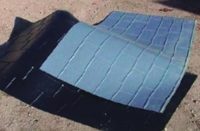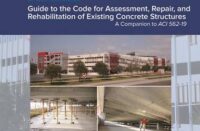The Concrete Polishing Council (CPC), a specialty council of the American Society of Concrete Contractors (ASCC), St. Louis, MO, has released revisions to two charts of significance to polishing contractors, concrete contractors, designers and facility owners. They are the Polished Concrete Aggregate Exposure Chart and the Polished Concrete Appearance Chart, developed by the Concrete Polishing Association of America (CPAA), now the CPC.
Changes to the Aggregate Exposure Chart were precipitated by a high volume of calls to the ASCC technical hotlines concerning the outcome of floors specified Class C (medium aggregate) finish. “In the attempt to reveal the proper sized aggregate, owners felt contractors were not cutting into the floor deep enough,” said Todd Sharich, ASCC decorative concrete specialist, “forcing contractors to increase tooling and labor costs”.
The change eliminates the medium aggregate surface exposure, and the approximate surface cut depths for all classes. The new classes are A – cement fines; 85-95% cement fines, 5-15% fine aggregate; B – fine aggregate; 85-95% fine aggregate, 5-15% blend cement fines and coarse aggregate; and C – coarse aggregate; 80-90% coarse aggregate, 10-20% cement fines and fine aggregate.
The previous CPAA Finished Gloss Chart, now the Polished Concrete Appearance Chart, was based primarily on the finished gloss of the floor; a feature which many believed could be easily manipulated. The revised chart bases the appearance on Distinctness-of- Image (DOI) and haze index. DOI is the sharpness of images of objects produced by their reflection in a polished surface. Haze is the cloudiness or milky appearance of images of objects by their reflection in a polished surface. This chart also provides measurements for compliance, testing requirements that align with the standards of ASTM International, the international standards organization that develops and publishes voluntary consensus standards.
“The founders and charter members of the CPAA kick started the polishing industry by creating standards to help achieve acceptance by the design / build community”, says Scharich. “However as polishing continues to achieve tremendous growth as a flooring option it became necessary to update these documents. The changes made to the Appearance and Exposure Charts will help contractors meet a defined expectation level. The updated standards will continue to make polished concrete a primary flooring choice that owners can count on for its durability and low maintenance.”
The CPC was formed to provide standards, education and a professional network for polishing contractors and others serving in the industry. The primary goals are to furnish training opportunities and certification programs for members and to share information on best practices with the design and construction community.
The ASCC is a non-profit organization dedicated to enhancing the capabilities of those who build with concrete, and to providing them a unified voice in the construction industry. Members include concrete contracting firms, manufacturers, suppliers and others interested in the concrete industry such as architects, specifiers and engineers. There are approximately 750 member companies in the United States and 13 foreign countries.
For more information, visit www.ascconline.org or call the ASCC office at (866) 788-2722.













